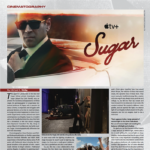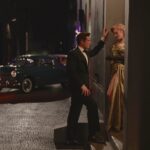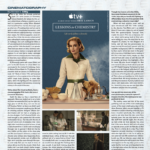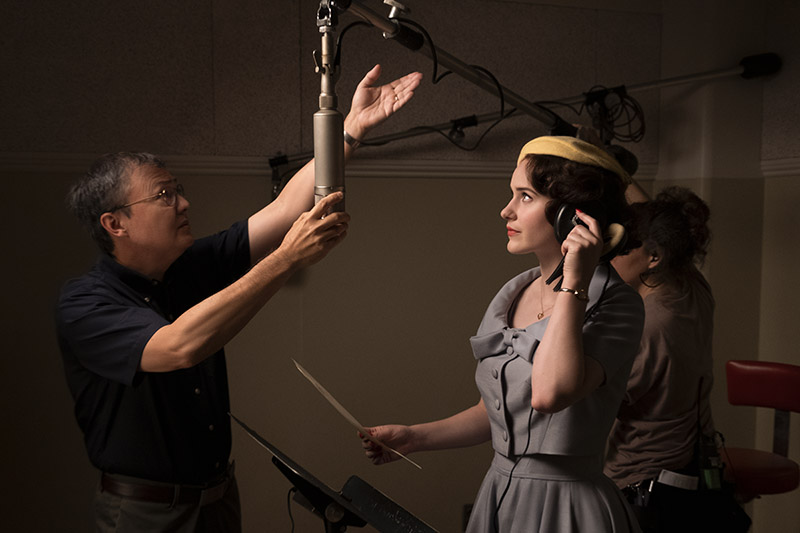
“Some people climb the crew ladder. I climbed the budget ladder,” says M. David Mullen, ASC, of his career as a cinematographer, the main DP behind the lens on the Emmy award-winning series from Amazon Prime Video, The Marvelous Mrs. Maisel, which is heading for a fourth season. Well known for his masterful use of the long take, or “oners,” the high-energy show employs a constantly moving camera, frequently utilizing Technocranes and Steadicam/MōVI combinations.
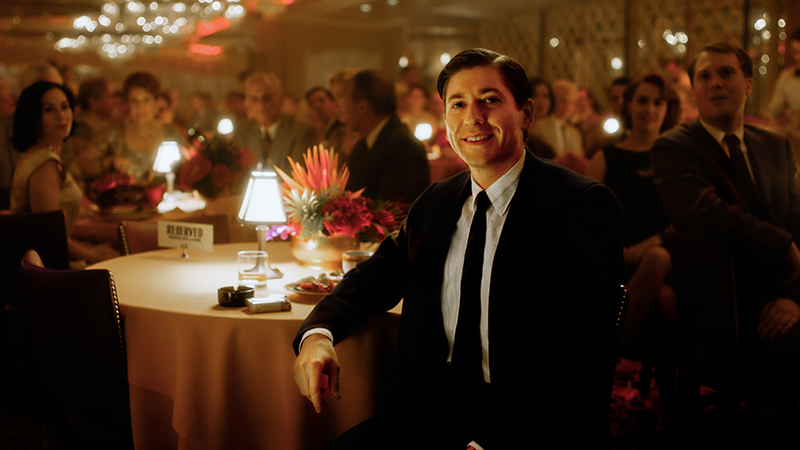
Movie and TV Work
Mullen’s fascination with cinematography began at age 16. Mainly self-taught, he shot films of his own, during and after attending undergraduate school at UCLA for a degree in English Literature. A short stint working in a conventional office building followed before he attended the California Institute of the Arts (CalArts) where he received his master’s degree in filmmaking and cinematography. After spending most of the 1990s shooting non-union straight-to-video genre movies, Mullen started shooting more art house fare aimed for film festivals.
He considers himself very fortunate that he has been able to straddle the barrier that often separates TV series and feature film work, and he also notes the importance of networking. A phone interview for the Netflix series Gilmore Girls (GG) in early 2016 did not get the hoped-for result. But although he did not land that job, director Jamie Babbit later recommended him to GG creator Amy Sherman-Palladino when she developed Amazon Prime Video’s The Marvelous Mrs. Maisel.
Typically, television series hire two cinematographers so that one can be preparing for the upcoming episode while the other is shooting on set or location. Mullen and Eric Moynier shared these lensing duties during the first two seasons; Jeff Jur, ASC did two episodes of the third season. Jim McConkey is Mullen’s “A” camera operator.
Largely photographed on location in Manhattan and the surrounding boroughs, the series has a realistic yet heightened visual style achieved not only through its photography by M. David Mullen, ASC but a team of key collaborators including production designer Bill Groom, supervising art director Neil Prince, set decorator Ellen Christiansen and costume designer Donna Zakowska.
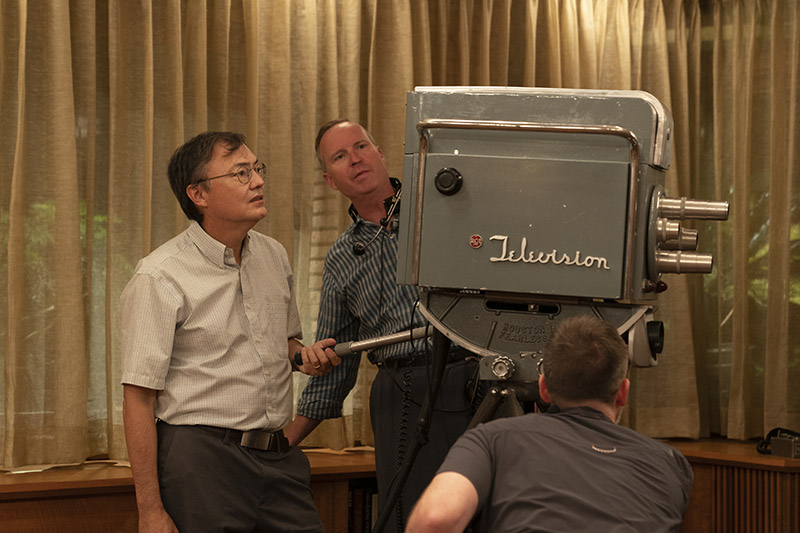
Visual Influences
Sherman-Palladino and Mullen talked a lot about films, and she suggested Mullen watch one in particular — Hannah and Her Sisters, the 1986 award-winning film directed by Woody Allen. “I believe her reasoning behind that is because it was all shot on location in New York City and has a somewhat romantic look overall, yet it still feels grounded in the reality of New York City,” Mullen says. “That is what she wanted for this show — to frame a beautiful and romantic cast surrounded by the reality of the streets and apartments of New York City.
Although The Marvelous Mrs. Maisel might be described as a “period show,” Mullen adds, “right off the bat, they told me that they did not want any kind of faded sepia-toned foggy period look.” Mullen also drew inspiration from the late DP Conrad Hall’s phrase, “romantic realism” which “describes lighting that feels like it comes from practical fixtures and natural light, but the lighting is heightened to be at its most dramatic and attractive.”
Mullen also re-imagined the look from movies and advertisements of the 1950s, which he describes as “aggressively pastel.” There are strong color accents, though sometimes those colors are pastels, set against neutral backgrounds of gray or brown. This informed his contrasting palette for the film.
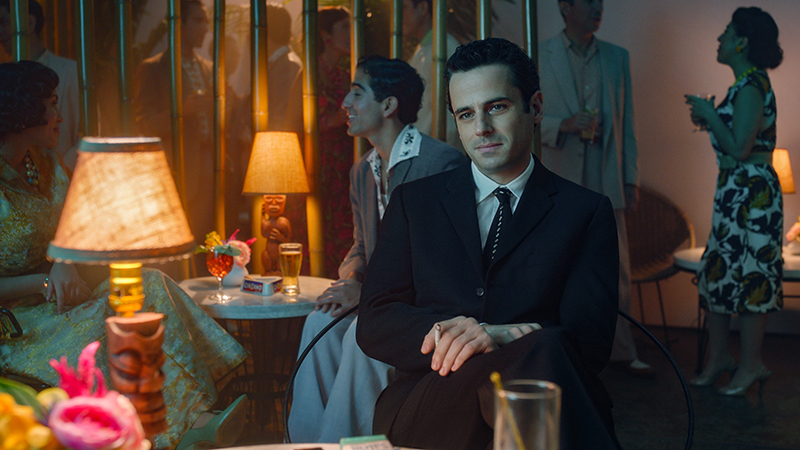
Moving Targets
The Marvelous Mrs. Maisel has an energetic look and feel, which was emphasized more in the camera movement than in the lighting. And as the cameras keep up with the actors as they move from room to room to room, Mullen says, “I had to figure out how to make the lighting work for the camera moves they planned.”
A device made by a company called Betz (the Wave) helps track the actors smoothly on the Steadicam. This is a self-leveling head that frees Steadicam operators from worrying about keeping the horizon level as they follow the cast around corners or hallways, helping them concentrate on framing instead.
“We sometimes use a MōVI Pro,” says Mullen, “especially when we must do a handoff from between a crane shot and a kind of Steadicam type move.” This allows the cinematographer to get into some very tight places as well as facilitating the “oner,” which is discussed further down.
A lot of the looks were determined in the pilot, which was originally shot on location (there were no sets built other than Mrs. Maisel’s manager Susie’s tiny apartment). For the series, which follows the transformation of the main character, Miriam “Midge” Maisel, from 1950s NYC housewife to 1960s standup comic à la Joan Rivers, locations like the Maisel apartment and the Gaslight Café were recreated on stage.
“Our stages are generally lit to tungsten at 3200 Kelvin on the Alexa,” explains Mullen. “On location, it all depends on if it is a daylight or tungsten interior. I do occasionally like lighting with mixed color temperatures, so I might use a tungsten light on location for a sunlight effect or late afternoon effect, then set the camera in between 3200 and 5600 so that the tungsten light is warm and the ambient skylight is cold. But generally, on stage, I light everything for the camera set at 3200K.”
Followspots and Hidden LEDs
The various clubs where Midge performs were all location shoots as well, which presented their own particular challenges. Says Mullen, “Most of the real clubs we go into have similar issues in that I have to light the stage as it would be in the 1950s and 60s, with classic small tungsten lights. Usually there is a followspot on Midge as she wanders around on stage, so we are constantly dealing with followspot operators and where we can place the spot platform.”
Some of the clubs weren’t designed with the followspot in mind. The crew would have to build a crow’s nest or platform. A few of the really small clubs totally prohibited the use of spots, because it didn’t make sense for the size and the venue. “I knew I would have to use a lot of available light along with my own lighting,” Mullen adds.
The stage lighting often involves a cue as the house lights go down and stage lights fade up. “Generally, Amy [Sherman-Palladino] likes the room pretty dark where the audience sits, but it must be bright enough for us to see their facial reactions to the humor.”
There were always the same sort of issues going on for every club, but Mullen didn’t want the scenes to all look alike, so he used a variety of table lamps and ambient sconce lighting to bring up room levels. “I will always work with the production designer to take into account the color scheme at each location before choosing what colored light to add onto the mix,” Mullen says.
The stages are lit with classic tungsten lighting, Fresnels and PARs with color gel on them. Mullen will sneak in some modern LED lights, but only if they can remain completely out of view during the shot.
“However, if a light cue involves a change from one color to another, I have to use a second light for the next color. They did not have lights that change color internally in that time period, like our modern LEDs are capable of. So if the light goes from pink to blue in the room, then I’ll need twice as many units,” Mullen notes. It follows, then, should he need additional colors, he would have to add even more fixtures to his overhead rig. The dance scenes in the clubs called for multiple color shifts. “So when I place an order for 60 lights, it looks a little insane for a small space, but they’re needed,” he laughs.
The “Oner” and the Cameras
“That style really comes from Amy Sherman-Palladino’s desire to keep up the pace of the actors playing at a certain energy level without being flagged by stopping and starting,” says Mullen. “If we do have coverage planned, she would rather have multiple cameras hidden around the room so the scene can be acted as if it were in one shot.”
The series is shot on Arri Alexa cameras (arri.com). “The creatives wanted the show to have a very classic look, and I feel the Alexa has the most film-like quality of any digital camera.” He relied solely on Alexa Mini’s with Primo lenses for the entire series. “That way, they all matched exactly, and I did not have to think about whether I wanted a bigger or smaller camera in certain positions,” Mullen says.
“I like the Primo lenses a lot,” he adds. “Panavision has an exceptionally good rental house in New York City and is often my go-to place. The Primo’s are nice modern lenses, which don’t flare too much and are not super-crisp. Also, they are fairly clean, but still have an elegant capability for softness or sharpness. We use a little bit of diffusion on the lens — Hollywood Black Magic filter from Schneider.”
For the pilot, Mullen often used a 21mm or 27mm lens on the Steadicam. Upon starting the series, he discovered a 24mm Primo lens that became the primary lens on the Steadicam. On tighter shots, Mullen will switch to a 30mm or 35mm lens. “I try to stick within that focal length range (24mm to 35mm) to get up-close and personal to the actors,” he points out. “The 24mm lens is also a practical choice in that we’re moving 360 degrees in these small New York apartments, having to squeeze past furniture and go through doorways. It just is not practical to use a longer lens in those situations.” The practical necessity of the 24mm lens also moved the show toward more shots taken with a wide-angle feel.
Framing the Shots
The Artemis Pro is another essential tool for Mullen. The Artemis is an app that can be used with an iPhone or iPad. With it, one can turn an iPhone into a viewfinder. It mimics framing for every lens in the program when lining up shots. The advantage is that the camera operator, the director, and DP can all be looking at the screen at the same time. “With a standard lens finder, I can get the shot lined up, but when I hand it over to the director, he or she may be viewing from a slightly different angle or creating a different composition,” Mullen says.
Another advantage with the Artemis Pro is a lens mount that fits onto the iPad Pro. This allows one to look through the actual camera lens and see the same view as on the Alexa, as opposed to using the iPhone lens. “The Artemis allows us to plan the shot very exactly and even record the blocking rehearsals. When the actors are away from set getting through hair and make-up, I can play back the rehearsal shot and see how much of the ceiling is in the scene and where a light can be hidden, or simply play back for a stand-in to view and get an exact idea of where and how they should place themselves,” Mullen says.
Big, long sequences on location are planned out meticulously and well in advance. “The challenge is a 360-degree camera move is going to see the whole room, so lighting has to be designed in the set or rigged off-camera. On the other hand, simple dialogue scenes that have a lot of big complicated moves are usually blocked on the day of shooting,” Mullen notes.
The “Oner” at the Fontainebleau
Mullen describes a particular “oner” that involves the use of two Technocranes along with the Wave and Steadicam/MōVI to complete the shot. “We were at the Fontainebleau hotel in Miami Beach, and I said to Amy, ‘I bet you want to shoot this as a oner,’ which she certainly did. My initial thoughts were about flying the camera over the fountain in front, lighting the interior lobby, and then flying the camera inside up to the ceiling. When I told her we would need two Technocranes to do this, she simply said, ‘Go for it.’”
The long shot starts outside with a MōVI on a Technocrane flying over the fountains in front of the hotel, which was then disconnected and carried across the car port, where it was walked across the carpet area and into the lobby then reattached to a second Technocrane so it could fly up in the air and see the lobby from a high angle, then float back down again, and then be disconnected a second time to follow Midge up to the counter in the lobby.
“Amy thinks like a dancer,” says Mullen. “She moves the extras and actors through the scene like dancers. We often have a choreographer on set for that very reason, because usually the extras are dancers. We need them to cross the lens at just the right moment as the camera moves. It’s all a big dance with the camera, and I’m just there to capture it photographically.”
